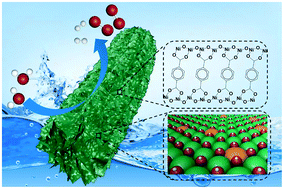Morphology and electronic modulation of composite nanosheets for electrocatalytic oxygen evolution through partial and in situ transformation of NiFe-LDH†
Abstract
Developing new strategies for constructing highly efficient electrocatalyst is still of great significance for renewable energy conversion. In this work, a controlled in situ partial transformation strategy through a two-step hydrothermal reaction was developed for the successful synthesis of a novel Fe–Ni(OH)2@Ni–BDC/CFC (BDC stands for 1,4-benzenedicarboxylic acid and CFC represents carbon fiber cloth) composite nanosheets. The as-obtained Fe–Ni(OH)2@Ni–BDC/CFC demonstrated improved electrocatalytic activity for oxygen evolution reaction (OER) compared to pristine Fe–Ni(OH)2/CFC or Ni–BDC/CFC under alkaline condition. Owing to the coordination effect of the BDC ligand and strong electronic interaction in the distinct chemical composite, metal cations in the composite catalyst hold a higher oxidation state, which will significantly enhance the electrocatalytic performance. Thus, the strategy illustrated here is anticipated to provide a new opportunity for synthesizing composite electrocatalysts that are difficult to synthesize via conventional methods.

- This article is part of the themed collection: Nanomaterials


 Please wait while we load your content...
Please wait while we load your content...